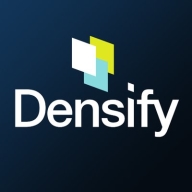

Densify and Morpheus are competitive cloud management solutions focusing on optimizing resource usage and efficiency. Morpheus has the upper hand in feature diversity and integration, which might justify its cost relative to Densify.
Features: Densify provides cloud resource optimization, predictive analytics for workload management, and enhanced capacity and usage visibility. Morpheus offers extensive integration with diverse IT environments, comprehensive automation capabilities, and a rich feature set for multi-cloud environments.
Room for Improvement: Densify could enhance its feature diversity and integration with more IT environments. Improving usability for less technical users and expanding multi-cloud support could be beneficial. Morpheus might focus on reducing setup complexity, enhancing its self-service catalog, and better aligning multi-cloud features with user needs.
Ease of Deployment and Customer Service: Densify offers straightforward deployment with responsive support, appealing to businesses needing quick resource optimization. Morpheus has a versatile deployment model suited for complex infrastructures and is praised for comprehensive customer service, benefiting businesses with diverse cloud needs.
Pricing and ROI: Densify offers competitive pricing with an emphasis on cost efficiency, providing strong ROI for cloud cost management. Morpheus, with a higher setup cost, justifies it through its extensive features and integration capabilities, offering robust ROI in complex deployments.
| Product | Market Share (%) |
|---|---|
| Morpheus | 7.5% |
| Densify | 0.9% |
| Other | 91.6% |


| Company Size | Count |
|---|---|
| Small Business | 1 |
| Midsize Enterprise | 1 |
| Large Enterprise | 9 |
| Company Size | Count |
|---|---|
| Small Business | 5 |
| Midsize Enterprise | 2 |
| Large Enterprise | 3 |
Densify is a hybrid cloud and container resource management platform that makes workloads self-aware of their precise resource requirements and automates the resource management and selection process. This solution helps you control your cloud spend and also helps your apps perform and scale better. Densify enables you to match your cloud requirements with the optimal cloud supply. Additionally, Densify is the only technology that leverages patented, predictive machine learning-powered analytics to perform advanced modeling of workload patterns, and provide precise optimization directives. It is ideal for cloud engineers, container platform owners, and IT finance.
Densify works by:
Densify Features
Densify has many valuable key features. Some of the most useful ones include:
Densify Benefits
There are many benefits to implementing Densify. Some of the biggest advantages the solution offers include:
Morpheus is a 100% agnostic cloud management platform (CMP) designed from the ground up to unify management of multi-cloud and hybrid IT while empowering DevOps teams with self-service provisioning of bare metal, VM, and container-based application services.
We monitor all Cloud Management reviews to prevent fraudulent reviews and keep review quality high. We do not post reviews by company employees or direct competitors. We validate each review for authenticity via cross-reference with LinkedIn, and personal follow-up with the reviewer when necessary.